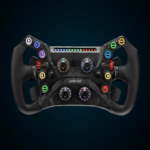
, and travel in any direction gives them unique advantages over fixed-wing aircraft. Unlike traditional planes that require runways, helicopters can take off and land in confined spaces, making them essential in search and rescue missions, military operations, medical evacuations, and urban operations. However, the skill of maintaining a helicopter’s position in the air requires a thorough understanding of aerodynamics, rotorcraft physics, and advanced piloting techniques.
In this article, we will dive into the mechanics of helicopter flight, the critical factors that influence helicopter position in the air, various techniques used by pilots to maintain and adjust helicopter positioning, and the practical applications of these techniques across different industries.
The Physics of Helicopter Flight
To understand helicopter positioning, one must first grasp the underlying physics of helicopter flight. Helicopters operate on a principle fundamentally different from that of fixed-wing aircraft. While planes rely on wings to create lift, helicopters generate lift through their rotors. These rotors consist of long, horizontal blades that spin around a central hub, creating lift through the rapid movement of air over the blades.
Lift and Thrust: The Core Elements of Helicopter Flight
- Lift: Lift is generated by the spinning rotor blades, which force air downward, creating an upward force on the helicopter. Adjusting the angle of the blades, known as the “collective pitch,” allows pilots to control the amount of lift. Increasing the collective pitch increases the blade’s angle, generating more lift and allowing the helicopter to ascend. Conversely, decreasing the pitch angle causes the helicopter to descend.
- Thrust: Thrust is what propels the helicopter forward, backward, or sideways. It is produced by tilting the rotor blades using the cyclic control. By changing the direction of the rotor disc, the pilot can control the helicopter’s movement in any direction.
- Drag and Weight: Just like any other aircraft, helicopters must counteract drag and weight to maintain controlled flight. Drag, the resistance of the helicopter moving through the air, can be mitigated by the engine’s power. Weight, on the other hand, is simply the force due to gravity pulling the helicopter toward the ground.
Helicopter Positioning Dynamics
Helicopter positioning refers to the act of controlling and maintaining the aircraft’s spatial orientation, hover, or movement with precision. This requires continuous adjustments to the helicopter’s flight controls, as well as a deep understanding of the forces acting on the aircraft. The positioning of a helicopter depends on four main elements:
- Hovering
- Translational Movement
- Yaw Control
- Altitude Control
1. Hovering
Hovering is one of the most demanding tasks for a helicopter pilot. It requires precise control of the rotor blades, pitch, and engine power to maintain the helicopter’s position in a fixed location in the air. Hovering can be affected by wind, air pressure, and changes in the surrounding environment.
- Ground Effect: When hovering near the ground (within one rotor diameter of the surface), helicopters experience a phenomenon known as ground effect. Ground effect increases lift, allowing the helicopter to hover more efficiently. However, when moving out of this region, the helicopter requires more power to maintain the same position in the air.
- Power Adjustments: Pilots constantly adjust the collective pitch and throttle to maintain a stable hover. Small changes in the rotor blades’ angle of attack can result in significant changes in altitude or position. Maintaining a precise hover requires subtle but continuous control input.
2. Translational Movement
Unlike fixed-wing aircraft, helicopters can move in any direction without needing forward momentum. Translational movement refers to the helicopter’s ability to fly forward, backward, or sideways, thanks to the cyclic control, which alters the pitch of the rotor blades.
- Translational Lift: As the helicopter moves forward, it gains additional lift due to the increased airflow over the rotor blades, known as translational lift. This allows the helicopter to move more efficiently in forward flight.
- Lateral and Rearward Flight: Moving laterally or rearward requires adjustments to both the cyclic and collective controls. For lateral movement, the cyclic is tilted to the side, causing the helicopter to bank in that direction. Rearward flight is achieved by tilting the cyclic backward, though this type of movement is generally avoided due to the increased difficulty in controlling the aircraft.
3. Yaw Control
Yaw refers to the helicopter’s rotational movement around its vertical axis. Unlike fixed-wing aircraft, which use ailerons and rudders for yaw control, helicopters use a tail rotor or a fenestron (a ducted fan) to counteract the torque generated by the main rotor. The tail rotor’s thrust is controlled by the anti-torque pedals, allowing the pilot to rotate the helicopter left or right without changing its horizontal position.
- Tail Rotor Functionality: In traditional single-rotor helicopters, the main rotor generates significant torque, which would naturally cause the helicopter to spin uncontrollably. The tail rotor counteracts this torque by providing thrust in the opposite direction, allowing the helicopter to maintain its heading.
- Pedal Inputs: Pilots control yaw by adjusting the anti-torque pedals, which alter the tail rotor’s pitch, thereby changing the amount of thrust produced. Small adjustments to the pedals can rotate the helicopter to the desired heading without affecting its altitude or position.
4. Altitude Control
Altitude control is primarily managed through the collective control, which adjusts the pitch of the rotor blades. Increasing the collective pitch causes the helicopter to ascend, while decreasing it results in a descent. However, altitude control can also be influenced by other factors, such as air pressure, temperature, and the helicopter’s weight.
- Barometric Effects: Changes in air pressure can affect the helicopter’s ability to maintain altitude. At higher altitudes, where the air is less dense, the helicopter must work harder to generate the same amount of lift. Conversely, at lower altitudes, lift generation becomes easier, and less power is required to maintain position.
- Power Management: Effective power management is essential for altitude control. Pilots must continuously monitor engine performance and adjust the throttle to ensure the helicopter remains at the desired altitude without stalling or losing control.
Techniques for Maintaining Helicopter Position
Maintaining the position of a helicopter in flight requires a combination of training, skill, and advanced technology. Pilots use a variety of techniques and instruments to ensure precise positioning in the air:
1. Hovering Techniques
Hovering requires a delicate balance of collective, cyclic, and anti-torque pedal inputs. Pilots typically practice hovering over marked spots on the ground, honing their ability to make minute adjustments based on visual and sensory feedback.
- Visual References: Pilots use visual references on the ground to maintain a steady hover. A common technique involves focusing on a fixed object near the helicopter’s position and adjusting control inputs based on the helicopter’s perceived movement relative to that object.
- Auto-Hover Systems: In modern helicopters, auto-hover systems can assist pilots by automatically adjusting the controls to maintain a stable hover. These systems are particularly useful in situations where the pilot needs to focus on other tasks, such as during search-and-rescue missions or while landing in difficult terrain.
2. Precise Landing Techniques
Landing a helicopter in a confined area, such as on a rooftop, ship deck, or mountain slope, requires excellent control of the helicopter’s position. Pilots must carefully manage the helicopter’s descent rate, yaw, and lateral movement to land smoothly.
- Vertical Descent: For precise landings, pilots often perform a controlled vertical descent, using the collective to slowly lower the helicopter to the ground. Maintaining a steady rate of descent and avoiding lateral drift is critical to a safe landing.
- Wind Compensation: Wind can significantly affect the helicopter’s position during landing. Pilots must compensate for wind by adjusting the cyclic and pedals to ensure the helicopter doesn’t drift off course during the descent.
3. Navigating Confined Spaces
One of the key advantages of helicopters is their ability to operate in confined spaces where fixed-wing aircraft cannot. Whether flying through urban environments or landing in tight areas, helicopter pilots must be adept at controlling the aircraft’s position with precision.
- Urban Operations: In urban environments, helicopters are often used for medical evacuations, law enforcement, or firefighting. Pilots must navigate between buildings and other obstacles while maintaining precise control over the helicopter’s position and altitude.
- Search and Rescue (SAR) Operations: In SAR missions, helicopters are often required to hover over challenging terrain, such as mountain cliffs or ocean swells, to rescue stranded individuals. Maintaining position in such scenarios requires both skill and advanced equipment, including radar and GPS systems to ensure accuracy.
Modern Helicopter Positioning Systems
Advancements in technology have greatly enhanced the ability of helicopters to maintain position with precision. Modern helicopters are equipped with sophisticated avionics and autopilot systems that assist pilots in controlling the aircraft.
1. GPS and Navigation Systems
Global Positioning System (GPS) technology has revolutionized helicopter positioning. With GPS, pilots can pinpoint their exact location and use it to navigate or maintain position with incredible accuracy. GPS is particularly useful in search-and-rescue missions and medical evacuations, where precise positioning is critical.
- Waypoint Navigation: Pilots can program waypoints into the GPS system, allowing the helicopter to automatically follow a predetermined route. This reduces the workload on the pilot and ensures that the helicopter remains on course.
2. Autopilot Systems
Modern helicopters are often equipped with advanced autopilot systems that can take over certain tasks from the pilot, such as maintaining altitude, heading, and position. Autopilot systems are especially useful during long flights, search-and-res









